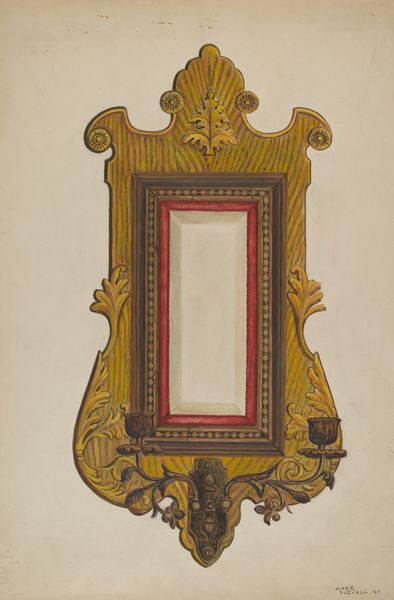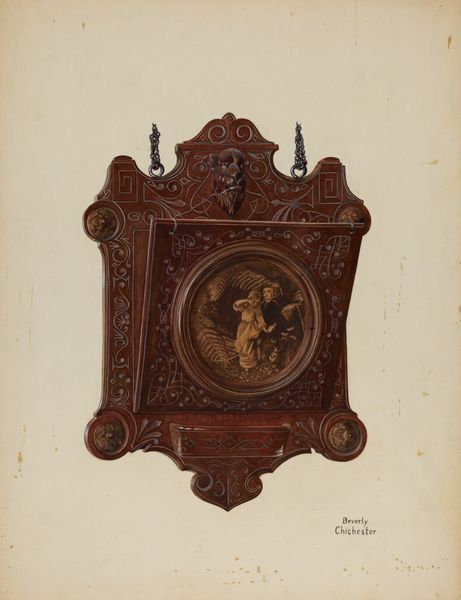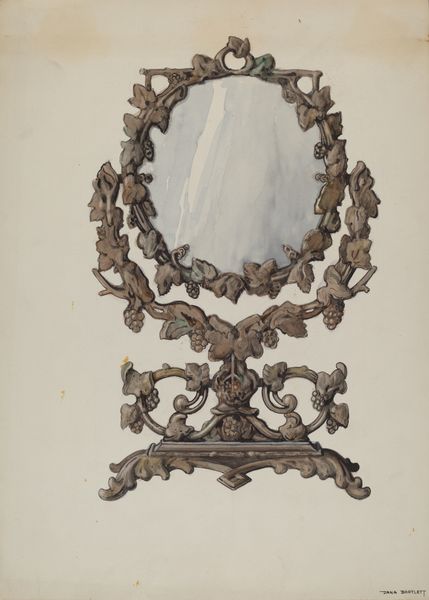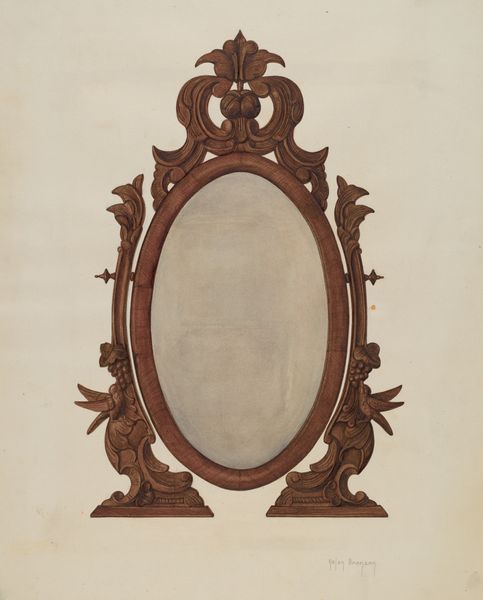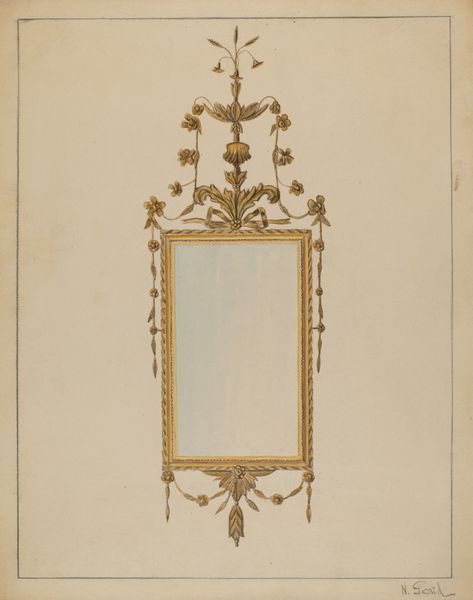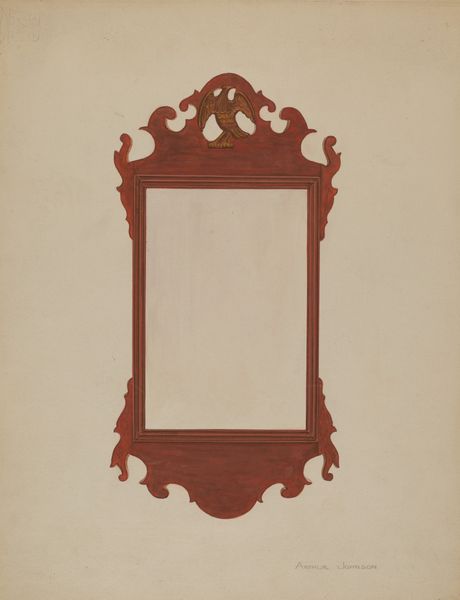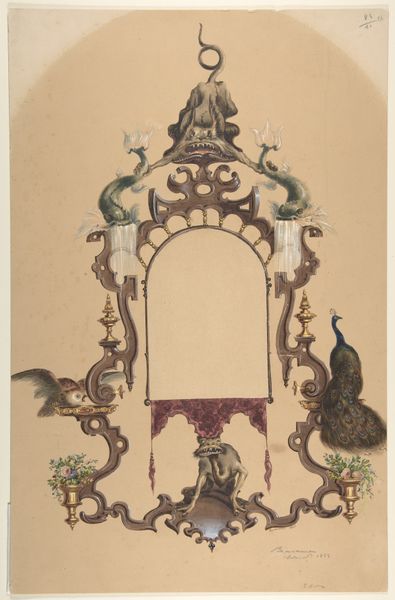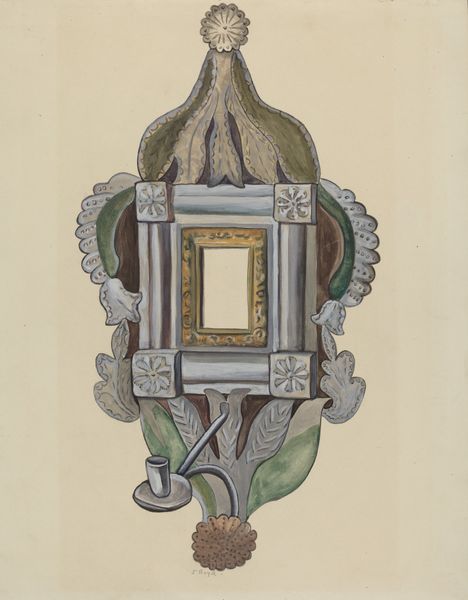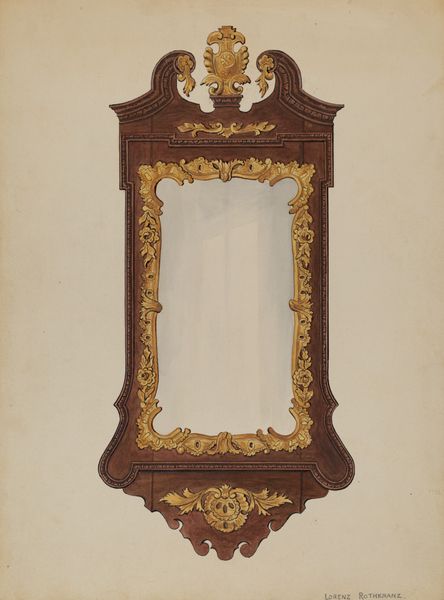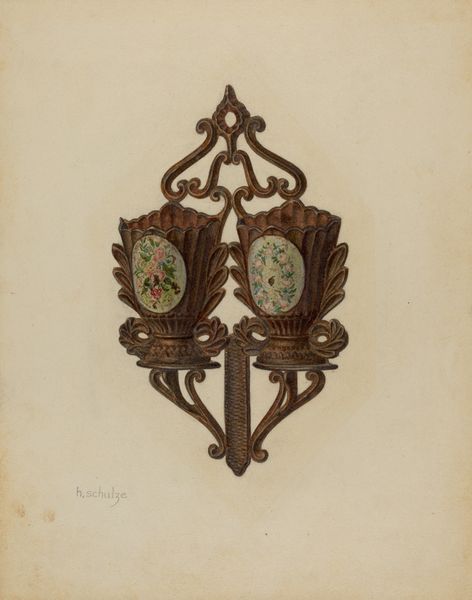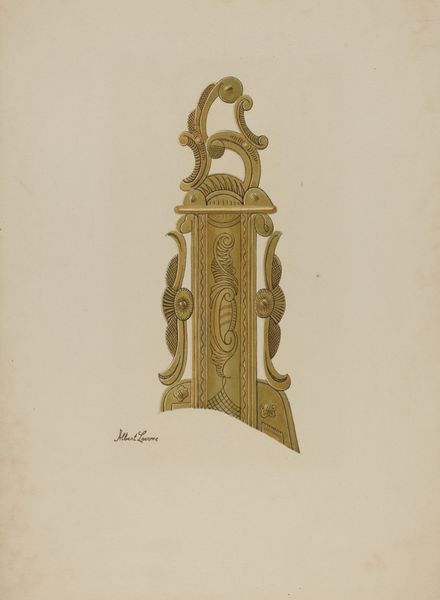
drawing, carving, pencil, wood
#
portrait
#
drawing
#
carving
#
pencil
#
wood
#
decorative-art
Dimensions: overall: 35.5 x 24.4 cm (14 x 9 5/8 in.) Original IAD Object: 44"high, 21 1/2"wide. Door=18"high, 9 1/2"wide.
Copyright: National Gallery of Art: CC0 1.0
Editor: Here we have "Wall Cabinet, Hand Carved," dating from around 1937, attributed to Harry Mann Waddell. It seems to be a drawing or rendering of the piece, showing pencil work along with the wood carving itself. The cabinet is ornately decorated with a deer head at the top and hunting imagery. It strikes me as very old-world and almost aggressive in its display of the hunt. What do you see in this piece? Curator: I see a confluence of power, tradition, and masculine identity tightly bound within a seemingly simple decorative object. This wall cabinet, rendered with such detail, speaks to a very specific social context of its time. The prominent use of animal imagery—the stag, the bird—these weren’t merely decorative choices. Editor: What were they, then? Curator: They functioned as emblems. Think about the era, the 1930s. Who was claiming access to nature, to land, to resources? Who was excluded? What social hierarchies were being reinforced through this aesthetic? This piece may seem innocuous on the surface, but it actively participates in the construction of a very particular identity, celebrating a specific vision of masculinity linked to hunting and the display of conquest over the natural world. Do you see those arrows piercing the roped border? This isn’t just about aesthetics; it's about staking a claim. Editor: So, the act of carving, the display of hunted animals—they're not just artistic choices but declarations of power? Curator: Precisely. Consider how this imagery might resonate differently depending on your gender, your relationship to hunting, or your understanding of environmental ethics. This piece isn't neutral; it provokes a conversation about who gets to define and control these spaces. Editor: That definitely shifts how I see it. It’s not just a cabinet anymore; it’s a statement. Thanks! Curator: And one ripe for critical interrogation! Examining these pieces lets us consider how deeply entrenched these ideologies are within our visual culture.
Comments
No comments
Be the first to comment and join the conversation on the ultimate creative platform.

